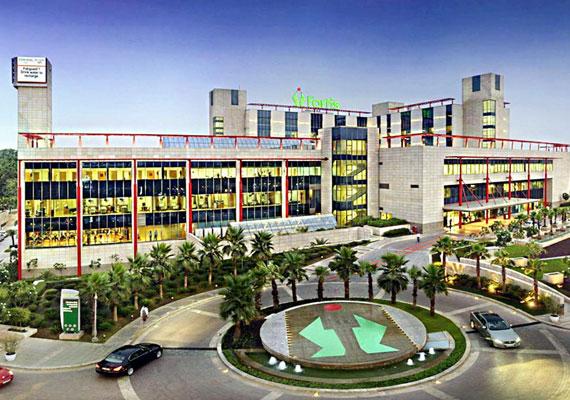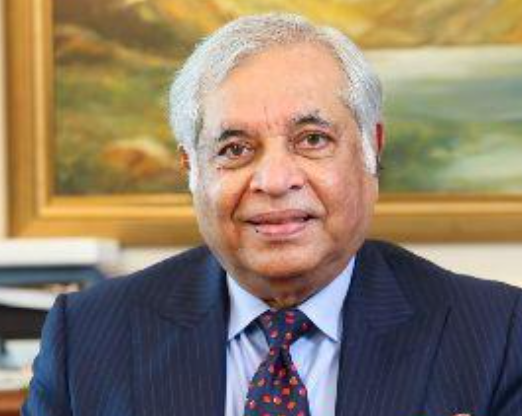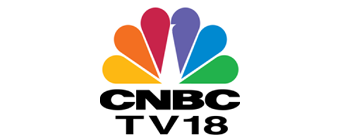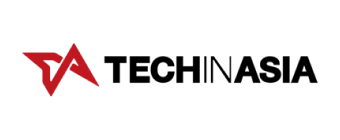Explore Treatments across specialities
Dedicated Assistance
in appointments, hotels, visa and forex
View all testimonials 
Find The Top Doctors
View All ![Arrow]()
Chairman - Max Institute Of Laparoscopic, Endoscopic, Bariatric Surgery & Allied Surgical Specialities
CONSULTS AT EXPEREIENCE :45+ years SURGERIES :
85000+
Treatment Price on request
Free Text ConsultTreatment Price on request
Chairman - Max Institute Of Laparoscopic, Endoscopic, Bariatric Surgery & Allied Surgical Specialities
CONSULTS AT45+ years SURGERIES
85000+ TREATMENT COST
Treatment Price on request
Medical Director - Opthalmology
CONSULTS AT EXPEREIENCE :17 years SURGERIES :
50000+
Treatment Starting at $600
Free Text ConsultTreatment Starting at $600
17 years SURGERIES
50000+ TREATMENT COST
Starting at $600
Chairman And Managing Director - Medanta Heart Institute
CONSULTS AT EXPEREIENCE :43 years SURGERIES :
48000+
Treatment Price on request
Free Text ConsultTreatment Price on request
43 years SURGERIES
48000+ TREATMENT COST
Treatment Price on request
Treatment Starting at $4,000
Free Text ConsultTreatment Starting at $4,000
32 years SURGERIES
45000+ TREATMENT COST
Starting at $4,000
Healthtrip Blog
View All Articles ![Arrow]()

The Cost of Scoliosis Surgery: What You Need to Know
Navigating the financial landscape of scoliosis surgery can feel overwhelming, especially when trying to understand the full scope of scoliosis surgery cost. Scoliosis, a condition leading to an abnormal curve in the spine, often necessitates surgical intervention for severe cases. This makes knowledge about scoliosis cost and the factors influencing scoliosis surgery cost essential for those considering their options.The journey through understanding, preparing for, and managing the costs associated with scoliosis surgery involves several critical aspects. Beyond the base cost, you'll need to consider insurance coverage and out-of-pocket expenses, as well as the potential financial implications of alternative treatments. This article aims to provide you with a comprehensive overview, helping you to make informed decisions regarding scoliosis surgery and its financial impact.Understanding Scoliosis and Its TreatmentsScoliosis, characterized by an abnormal curvature of the spine, often requires various levels of intervention depending on the severity and progression of the curve. Here, we explore both non-surgical and surgical treatments available for managing this condition.Nonsurgical TreatmentsPhysical Therapy: Often prescribed to help manage symptoms and improve function, the costs and frequency of sessions can vary based on severity and location.Bracing: Commonly used for moderate scoliosis in growing children, braces are designed to halt curve progression. They must be worn up to 16 hours a day and are custom-made to fit under the arms and around the rib cage, lower back, and hips.Medication: While not a treatment for the curve itself, medication can be used to manage pain associated with scoliosis.Scoliosis SurgerySurgical options are considered when nonsurgical treatments fail to prevent curve progression, especially in severe cases:Spinal Fusion: The most prevalent surgical technique, where rods and screws are used to correct and stabilize the spine.Expanding Rod: Utilized primarily in children, this involves attaching rods that adjust as a child grows.Vertebral Body Tethering: A less invasive method that involves placing screws and a flexible cord along the spine to correct curvature over time.Decision Factors for TreatmentThe choice between surgical and non-surgical options largely depends on factors such as the degree of curvature, age, rate of curve progression, and overall health. For instance, surgery is more commonly recommended for curves exceeding 40 degrees in the US and 50 degrees in Europe. Regular monitoring through physical exams and imaging tests like X-rays or MRIs is crucial for determining the most appropriate treatment pathway.This section outlines the primary approaches to managing scoliosis, emphasizing the importance of tailored treatment plans based on individual needs and conditions.Analyzing the Cost Factors of Scoliosis SurgeryUnderstanding the financial aspects of scoliosis surgery is crucial as costs can vary significantly based on several factors. The price tag for scoliosis surgery typically ranges from $10,000 to $300,000, with many patients seeing costs around $150,000. This wide range is influenced by various elements including the complexity of the surgery, the number of vertebrae fused, and the specific medical devices used.Complexity and Length of Surgery: The type of scoliosis surgery, whether it's spinal fusion or vertebral body tethering, plays a significant role in cost determination. More complex surgeries that involve multiple vertebrae or advanced techniques like thoracoplasty can increase the overall price. Additionally, longer surgeries require more time from medical professionals and use of the operating room, which adds to the cost.Hospital Stay and Regional Variations: The length of hospital stay post-surgery significantly affects the total cost. On average, a hospital stay for scoliosis surgery can cost around $8,825 per day, with stays typically lasting about 5 days. Moreover, the cost of surgery can also vary depending on the region or state. For instance, the cost for spinal fusion in cities like Austin and Dallas can range from $116,106 to $165,840.Medical Devices and Support Staff: The choice of instrumentation and materials, such as rods and screws, and the type of bone graft used, are substantial cost factors. These hardware costs can make up about 29% of the total surgery cost. Additionally, fees for the surgical team and support staff, who are essential for a successful operation, also contribute to the financial burden.By considering these factors, you can better understand and anticipate the costs associated with scoliosis surgery, helping you make more informed financial decisions.Insurance Coverage and Out-of-Pocket ExpensesScoliosis surgery, while often essential, can bring with it a maze of insurance details and potential out-of-pocket costs that you'll need to navigate. Most health insurance plans typically cover scoliosis surgery, but the extent of coverage can vary significantly depending on your specific policy and circumstances. It's crucial to understand these details to prepare financially for what lies ahead.Understanding Your Insurance CoverageFirstly, check with your insurance provider to confirm the specifics of what your plan covers regarding scoliosis surgery. This can include inquiries about which surgical procedures are covered, the extent of coverage, and whether your chosen surgeon and hospital are in-network—factors that can significantly influence your financial responsibility. Being treated by in-network providers usually means lower out-of-pocket costs, so it's worth checking this in advance.Managing Out-of-Pocket CostsEven with insurance, you will likely face some out-of-pocket expenses. These can include deductibles—the amount you pay before your insurance starts paying, co-pays—fixed amounts for services or prescriptions, and coinsurance—typically a percentage of the costs of your care. To manage these costs effectively:Explore Payment Options: Many hospitals offer payment plans which allow you to pay your portion of the bill over time rather than all at once.Utilize Savings Accounts: Consider using funds from Flexible Spending Accounts (FSAs) or Health Savings Accounts (HSAs), which use pre-tax dollars to help you save on medical expenses.Negotiate with Providers: Sometimes, you can negotiate the cost of your care directly with the hospital or your healthcare provider, especially if you can demonstrate financial need or if you are paying out of pocket.Leveraging Data for Better Financial PlanningFor a broader perspective, refer to data released by the Centers for Medicare & Medicaid Services (CMS), which includes information on charges for similar spinal procedures under DRG 460. Although this data primarily covers spinal fusion without major complications or comorbidity, it can provide a useful benchmark for understanding potential costs in the context of scoliosis surgery.By taking these steps, you can better prepare for the financial aspects of scoliosis surgery, ensuring that you focus more on recovery and less on financial stress.Alternatives to Surgery and Their Financial ImplicationsExploring non-surgical treatments for scoliosis involves understanding both the effectiveness and the financial implications of each option. For many, conservative treatments provide a viable alternative to surgery, though costs can vary widely depending on the type and duration of treatment.Conservative Treatment CostsComprehensive Consultation/Assessment: Initial consultations typically range from $200 to $300. This step is crucial for diagnosing the severity of scoliosis and planning subsequent treatments.Chiropractic Care and In-Office Therapy: Each session may cost around $300. These treatments focus on managing pain and improving spinal alignment through non-invasive techniques.Corrective Bracing: Unlike traditional bracing, corrective bracing is designed to not only stop the progression of the curve but also attempt to reduce the curvature. These braces can cost 25 to 30 percent more than traditional options, ranging from $2,600 to $13,000 depending on the specific design and materials used.Home Rehabilitation and Equipment: Costs for home-based rehabilitation gear can run between $700 and $1,000. This equipment supports ongoing treatment efforts outside of clinical settings.Comparing Costs and EffectivenessWhile nonoperative treatments for adult spinal deformity can be costly and sometimes less effective than surgical options, they are associated with fewer risks and lower overall resource utilization. Physical therapy, which might require multiple sessions priced between $75 and $150 each, offers a less invasive approach to managing scoliosis. However, the total cost and number of sessions needed can accumulate, potentially making this option as expensive as some surgical treatments over time.Medication and Long-Term ManagementOngoing medication costs must also be considered. These expenses vary based on the prescribed drugs and the duration of treatment. For individuals opting for conservative management of scoliosis, medications primarily aim to alleviate discomfort associated with the condition, contributing to the overall cost of non-surgical pathways.By weighing these factors, individuals can make more informed decisions about managing scoliosis financially and medically, potentially avoiding surgery or preparing financially for it if it becomes necessary.ConclusionThrough the discourse of this article, we've learnedthe nuances of scoliosis and its treatments, navigated the financial terrains involving the costs of scoliosis surgery, insurance intricacies, and out-of-pocket expenses, to exploring alternative treatments and their financial implications. We hope this comprehensive exploration has helped you understand different requirements of scoliosis surgery—not just the clinical aspects but the significant financial planning and decision-making involved. The decision between surgical intervention and conservative treatment remains a complex one, influenced by medical, personal, and financial factors. This article aimed to demystify the financial aspect, providing you with the insights necessary to make informed decisions regarding scoliosis surgery and its encompassing costs. As we conclude, remember the significance of engaging in discussions with healthcare providers, insurance representatives, and financial planners to fully grasp the scope of your financial obligations and options. This groundwork will benefit you greatly for informed decision-making and proactive planning, underscoring the article's thesis on the critical nature of understanding the landscape of scoliosis surgery costs. Also, for a comprehensive understanding of the financial aspects surrounding scoliosis surgery, we recommend you to visit HealthTrip.com. Make informed decisions about your scoliosis treatment journey while managing costs effectively.

Scoliosis Surgery Recovery: Exploring 5 Key Aspects
Embarking on the journey of scoliosis surgery recovery can be daunting, yet, understanding the essential aspects of the process can significantly smoothen the path ahead. The recovery from scoliosis treatment, particularly surgery, typically spans 3 to 6 months, with the initial weeks presenting the hardest challenges. It's crucial for you, especially if you're a parent prepping for your child’s surgery, to delve into the preparatory steps and become well-informed. This proactive approach not only mitigates anxiety but also enhances the effectiveness of the recovery phase.This article aims to guide you through the comprehensive pathway of scoliosis surgery recovery. It encapsulates a structured overview starting from the immediate post-surgery phase, through the intricacies of the recovery timeline, to the pivotal role of physical therapy and rehabilitation. Moreover, acknowledging the significance of emotional and psychological support, this guide aspires to arm you with knowledge and readiness, making scoliosis treatment recovery less daunting and more manageable.Understanding Scoliosis and the Need for SurgeryScoliosis, characterized by an abnormal curvature of the spine, often manifests during adolescence. The condition appears in several forms: Idiopathic Scoliosis, the most common type, occurs without a known cause; Neuromuscular Scoliosis develops in conjunction with disorders like cerebral palsy or muscular dystrophy; and Congenital Scoliosis, present from birth, arises from spinal anomalies during development. While initial treatments focus on halting curve progression, surgery becomes imperative when the curvature exceeds 45 degrees, aiming to prevent severe physical complications and enhance quality of life.Types of Surgical InterventionsSpinal Fusion: This traditional method uses metal rods and screws to hold the spine straight while the bone grafts fuse the vertebrae. Options for grafts include autografts from the patient's hip, allografts from a donor, or synthetic alternatives.Vertebral Body Tethering: A less invasive option that allows for continued spinal growth in younger patients, adjusting the spine's growth in real time.Magnetically Controlled Growing Rods: Ideal for children, these rods adjust via external magnets to support straight growth without multiple surgeries.Surgical approaches vary, with some accessing the spine through the back (posterior fusion), others through the front (anterior fusion), and more complex cases requiring both. Techniques like Video-Assisted Thoracoscopic Surgery (VATS) offer minimally invasive alternatives, reducing recovery time and potential complications such as nerve damage or infection. Each surgical choice depends on the type and severity of scoliosis, tailored to optimize outcomes and minimize risks.The Immediate Post-Surgery PhaseProactive Care and Initial MovementImmediately following scoliosis surgery, proactive care is crucial for a smooth recovery. Nurses play a vital role in delivering mental healthcare, which has been shown to improve both mental and physical health outcomes significantly. Within the first 24 to 48 hours, patients are encouraged to start moving—typically standing or walking short distances with assistance. This early activity is essential to enhance circulation and reduce the risk of complications.Home Preparation and Daily ActivitiesAfter the surgery, the total hospital stay will usually last between three to seven days. During this period, patients and their caregivers should prepare for the return home. It is critical to avoid bending, lifting, and twisting (BLTs), and tasks requiring these motions should be delegated to others. Using tools like a long grabber can help in picking up items from the floor without bending. Additionally, patients should not lift anything heavier than 5 lbs during the first two weeks post-surgery.Wound Care and Follow-upFocus on wound care is paramount to prevent infection. Keeping the incision dry and clean, following the doctor's instructions closely, and avoiding the application of creams or lotions until the wound has fully healed are essential steps. In the weeks following discharge, patients will need plenty of rest and should engage in light activities that do not strain the back. Follow-up appointments, including X-rays at 12 weeks post-operation, are crucial to monitor the healing process and adjust care as needed.Understanding the Recovery TimelineRecovery from scoliosis surgery is a structured journey, typically extending from 3 to 12 months, depending on individual progress and adherence to the medical team’s guidelines. Initially, you can expect to return to light activities like school or desk jobs within 2 to 4 weeks post-surgery, always mindful to avoid strenuous tasks that could impact the healing process.Month-by-Month BreakdownFirst Month: Focus on resting and light physical therapy. The first two weeks are crucial for wound care and avoiding any lifting beyond the prescribed weight limit. By the third and fourth weeks, you may start feeling stronger and can engage in more physical activities as advised by your doctor.Second to Sixth Month: Gradual increase in activities. You'll have follow-up appointments and possibly X-rays to ensure everything is on track. By the sixth month, normal activities can often be resumed, although contact sports or heavy lifting might still be off-limits.Six Months to One Year: This period will likely include the final phases of your recovery. Regular check-ups will monitor the fusion's progress, and by the one-year mark, you might be cleared to return to all your usual activities without restrictions.Key Recovery MilestonesWeeks 1-2: Manage pain, keep the surgical site clean, and minimal movement.Weeks 3-4: Increased mobility, potential return to work or school with limitations.Month 3: First major follow-up with potential for more active rehabilitation.Month 6: Assessment for resumption of most normal activities.One Year: Final evaluations to confirm successful recovery and discuss any further needs.Throughout this timeline, it's crucial to maintain regular communication with your healthcare provider and attend all scheduled appointments. This will ensure any issues are promptly addressed and adjustments to your recovery plan are made if necessary.Physical Therapy and RehabilitationPersonalized Therapy PlansPhysical therapy post-scoliosis surgery is tailored to meet individual needs, ensuring a recovery process that strengthens muscles and increases spine stability. Initially, therapy might include light exercises such as walking, which is encouraged to enhance circulation and muscle tone. As recovery progresses, physical therapists may incorporate specific exercises like the Standing Lat Stretch and Standing Low Row to improve flexibility and strength in the lat muscles, crucial for supporting the corrected spine structure.Progress Through StagesThe rehabilitation program typically evolves through several phases. During the first few weeks, the focus is on managing pain and preventing movement that could stress the surgical site, adhering to basic precautions like avoiding bending, lifting, and twisting. Between 2 and 6 months, patients often engage in up to four physiotherapy sessions where exercises gradually incorporate more rotation and increased range of movement. Each stage is designed to adapt to the healing stages and increased capabilities of the patient.Long-Term Recovery and Activity ResumptionPhysical therapy plays a pivotal role in not only immediate recovery but also in the long-term health of the spine. Regular sessions combined with prescribed home exercises contribute significantly to improving overall quality of life. Techniques learned during therapy help patients adopt new movements and mechanics essential after spinal surgery. Eventually, activities such as school PE, dance, and sports are reintroduced, following guidelines that ensure the spine is supported as strength and cardiovascular fitness are regained.Emotional and Psychological Support NeedsClinician-Led Mental Health ConversationsResearch underscores the positive impact of clinician-led mental health discussions on scoliosis patients. Engaging in mental health conversations with healthcare providers has been shown to significantly enhance management scores, indicating better coping mechanisms and overall mental health management. It's crucial for patients, especially adolescents, to have these open dialogues to address feelings of anxiety, depression, and the stress associated with scoliosis treatment.The Role of Emotional SupportThe journey through scoliosis surgery and recovery isn't just physical; emotional support plays a pivotal role. Support from friends, family, and specialized support groups provides not just solace but also motivation and a sense of belonging. Such support networks are invaluable, offering understanding and encouragement, and they play a crucial part in the patient’s recovery by helping manage the emotional upheavals associated with the condition.Preparing for RecoveryPreparation for post-surgery life is key to a smooth recovery. This includes practical steps like arranging transportation for follow-up visits, planning a return-to-school date, and discussing potential school accommodations. Emotional preparation involves setting realistic expectations about recovery timelines and potential challenges, which can significantly alleviate stress and anxiety. Moreover, understanding that recovery experiences vary widely among individuals helps in setting a personalized and flexible recovery plan.ConclusionEmbarking on the recovery journey post-scoliosis surgery unveils a path teeming with challenges and milestones, yet it's paved with the potential for significant improvements in quality of life and physical health. Throughout this guide, we've navigated the immediate steps following surgery, delved into the essentials of proactive care, and highlighted the integral role of physical therapy and emotional support. These aspects collectively forge a comprehensive recovery framework, tailored to assist patients and their families in surmounting the hurdles of post-operative care with knowledge and resilience. As we've explained, the journey through scoliosis surgery recovery is multifaceted, emphasizing not just the physical recuperation but also the psychological well-being of the patient.As you venture through their unique recovery timelines, maintain open lines of communication with healthcare providers and seek support from their communities remains paramount. This guide serves not only as a beacon of information but also advocates for a future where such journeys are approached with confidence and hope.

How to Recognize the Symptoms of Scoliosis?
Scoliosis, a condition where the spine curves sideways, is most often spotted during adolescence. Understanding scoliosis symptoms is crucial, as they often appear subtly but can lead to more severe complications including back pain, breathing difficulties, and issues related to appearance if the condition is severe. It's estimated that scoliosis impacts 2-3% of the population, translating to six to nine million people in the United States, signaling the importance of recognizing symptoms early for effective management.In this guide, we delve into identifying symptoms of scoliosis, highlighting the significance of early detection and when it's essential to seek medical advice. With more than 600,000 visits to physicians yearly for scoliosis in the U.S. alone, understanding and recognizing the signs can lead you to take timely action, ensuring a better quality of life for those affected. This comprehensive approach will not only cover recognizing the physical symptoms but also explore the psychological and emotional impacts, ensuring a holistic view of managing scoliosis.Understanding Scoliosis – Exploring Different Types Scoliosis, a complex spinal condition, manifests in various forms, primarily classified by etiology into idiopathic, congenital, or neuromuscular types. Here’s a straightforward breakdown:Idiopathic Scoliosis: Constituting about 80% of cases, this type remains widely prevalent. It typically develops during adolescence, especially between ages 10-15, and is more likely to require treatment in females, who are eight times more prone to severe curvature progressions.Congenital Scoliosis: This form arises from a malformation of one or more vertebrae during embryonic development. It can occur anywhere along the spine and is present from birth.Neuromuscular Scoliosis: This category includes scoliosis caused by neurological or muscular diseases, such as cerebral palsy or muscular dystrophy. It differs as it is secondary to another medical condition affecting neuromuscular control.Understanding the onset and progression is crucial for managing this condition effectively. Most scoliosis cases are mild; however, as children grow, some curves may worsen, necessitating close monitoring. Severe scoliosis can significantly impact lung function and overall mobility, highlighting the importance of early detection and appropriate treatment strategies.Recognizing ScoliosisSymptomsRecognizing the symptoms of scoliosis is crucial for early intervention and effective management. Here are some key signs that you should be aware of:Uneven Shoulders and Waist: One of the most noticeable signs of scoliosis is when one shoulder appears higher than the other or when the waist appears uneven. This asymmetry can also manifest with one hip being higher than the other.Prominent Shoulder Blade and Rib Cage: In some cases, one shoulder blade may stick out more than the other. When bending forward, you might notice a rib cage jutting out more prominently on one side, often referred to as a rib hump.Visible Curvature and Physical Discomfort: A visibly curved spine or leaning to one side is a strong indicator of scoliosis. This can lead to discomfort, with symptoms such as back pain, stiffness, and in severe cases, difficulties in breathing and fatigue due to the spine pressing against the lungs and heart.It's important to monitor these signs, especially in adolescents, as scoliosis can progress rapidly during growth spurts. If you notice any of these symptoms, consulting a healthcare professional for a detailed examination and appropriate management plan is advisable.When to Seek Medical AdviceIf you or your child exhibit any signs of scoliosis, it is crucial to consult a healthcare provider promptly. Here are specific situations when seeking medical advice becomes essential:Noticeable Signs in Children: If you observe any signs of scoliosis in your child, such as uneven shoulders, a prominent rib cage, or an asymmetrical waist, it is advisable to see a doctor immediately. Early detection is key to managing the condition effectively.General Practitioner Consultation: Whether it's you or your child displaying potential symptoms of scoliosis, the first step is to visit a general practitioner (GP). The GP can perform a preliminary assessment and determine if further specialist evaluation is necessary.Referral to a Specialist: If the GP suspects scoliosis, a referral to a specialist who deals with spinal disorders is the next step. Specialists have the tools and expertise to offer a more detailed diagnosis and to propose a management plan.For adults, the indicators to seek medical advice can include persistent back pain, visible deformities in the back, loss of height, or respiratory difficulties. These symptoms can signify progressing scoliosis, which requires professional intervention to prevent further complications. Always prioritize a medical evaluation when these symptoms are present to ensure timely and effective treatment.Monitoring and Managing Scoliosis - A Few Effective Strategies Monitoring and managing scoliosis effectively involves a combination of regular medical assessments, use of technological aids, and appropriate interventions based on the severity of the condition. Here’s a detailed look at the various methods employed:Technological Aids in Scoliosis ManagementWith advancements in technology, managing scoliosis has become more efficient. Applications and web-based tools play a crucial role in the diagnosis, screening, and continuous monitoring of scoliosis. There are six apps specifically evaluated for scoliosis management, focusing on aspects such as availability, technology used, measurement accuracy, functionalities offered, and user-friendliness. These apps help in posture monitoring, providing medical user interfaces for healthcare providers, and offering exercise monitoring and additional patient information, which are essential for both patients and healthcare providers to track progress and make informed decisions.Traditional and Surgical InterventionsDepending on the progression and severity of scoliosis, different treatment strategies are recommended. For mild to moderate scoliosis, especially in children whose bones are still growing, bracing is often advised to prevent further curvature of the spine. The braces used are low-profile, made from plastic, and designed to conform to the body, making them less intrusive yet effective. In more severe cases, surgical options such as spinal fusion or vertebral body tethering might be necessary. Spinal fusion involves connecting two or more spine bones to prevent movement, while vertebral body tethering uses screws and a flexible cord to correct the curve.The Role of Exercise and Community SupportGeneral physical activity, including sports, can significantly benefit individuals with scoliosis by improving overall health and well-being. While alternative treatments like chiropractic manipulations or electrical stimulation have not shown efficacy in correcting scoliosis, the psychological and emotional support from a strong peer group is invaluable. This support is particularly crucial for young patients undergoing bracing or surgery, helping them accept and adapt to their treatments and condition.ConclusionThrough this comprehensive guide, we have tried to help you understand scoliosis symptoms better, and also shared multifaceted approaches to managing this condition. We’ve navigated the nuances of early detection, the importance of professional medical advice, and the integration of technology and community support in treatment plans. We hope, the insights provided empower you and your families to tackle this condition head-on. This exploration underscores the criticality of recognizing symptoms early on and taking decisive action towards management and treatment, facilitating a better quality of life for those impacted.The discussion around scoliosis, from recognizing the early signs to understanding the psychological and emotional impacts, highlights the crucial role of a supportive community and the advancements in medical technology. As we look to the future, it is with the hope that further research and innovation will continue to improve the lives of those dealing with scoliosis. Understanding the condition thoroughly ensures that individuals are not defined by their diagnosis but are empowered to lead full, active lives despite it.Also, we encourage you to explore HealthTrip.com. Their extensive resources will provide you with invaluable insights into scoliosis symptoms, and their implications, as well as treatment options. Whether you're seeking clarity on specific symptoms or seeking support, HealthTrip.com is your trusted ally in managing scoliosis effectively.
We have been
in the News
View All 
 India
India UAE
UAE Turkey
Turkey Thailand
Thailand





 New Delhi, India
New Delhi, India



















